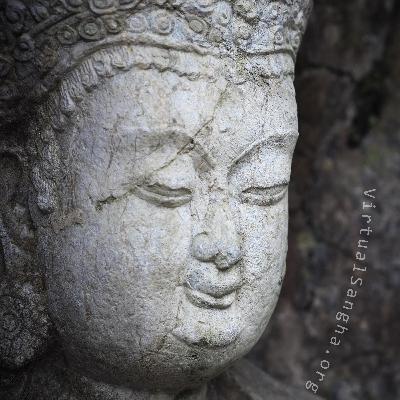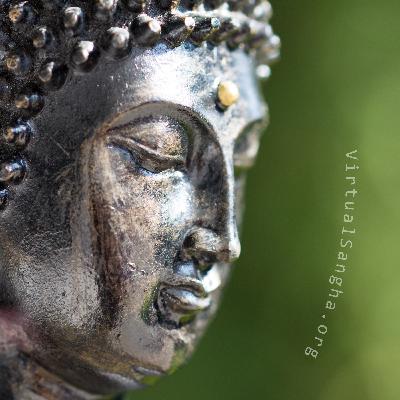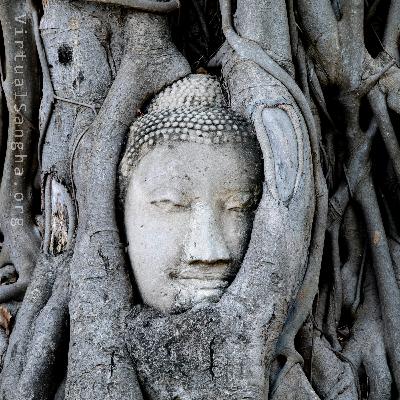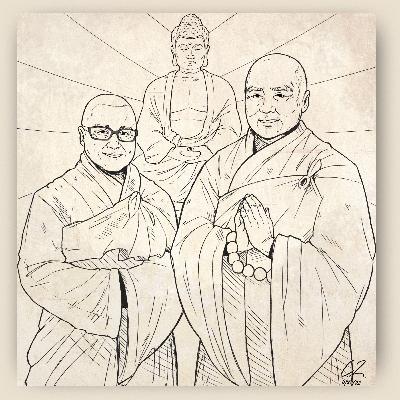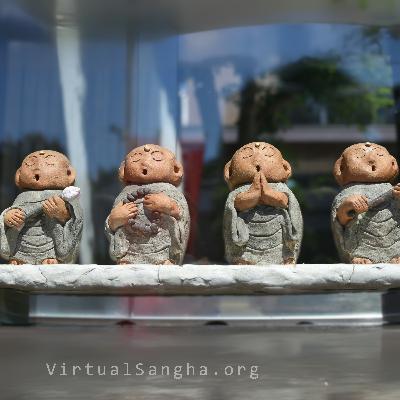Discover Virtual Sangha Podcast
Virtual Sangha Podcast

Virtual Sangha Podcast
Author: VirtualSangha.org
Subscribed: 2Played: 6Subscribe
Share
© Copyright All Rights Reserved
Description
Looking to learn more about Buddhism and connect with friends on the path? Or maybe you're an experienced practitioner and you enjoy keeping a beginner's mind. Wherever you're at in your journey, you're invited to visit virtualsangha.org, to browse our resources there, and connect with our supportive and inclusive community on Discord. Visit https://virtualsangha.org for more information.
42 Episodes
Reverse
Mike learns about Jay's journey. They discuss the importance of connecting with a community, and how they experience the relationship between secular and traditional Buddhism.
Why keep the precepts?Study and practice with our online Buddhist Sangha at https://virtualsangha.org
Chris shares a talk on the subject of Right Effort.Study and practice with our online Buddhist Discord at https://virtualsangha.org.
Always avoid speech that is untrue, pointless, or harmful, and be mindful of proper timing when explaining what you know to be true and beneficial.
Right Intention, samma-saṅkappa, also called Right Thought, is the wholesome application of the mind, described in MN 19.Read along at https://virtualsangha.org/right-intention-mn-19/
Nick-Chöden shares his deep connection to both Buddhism and Christianity. His Buddhist roots trace back to his mother's practice of Nichiren Shōshū, which was followed by a decades-long practice of Tibetan Buddhism that began in his early thirties. The pinnacle of his Tibetan practice was his ordination as a novice monk in 2012 by His Holiness the 14th Dalai Lama in India, who granted him the ordination name Tenzin Chöden. Nick-Chöden is also a dedicated participant in the Thích Nhất Hạnh Plum Village Zen tradition. Complementing his Buddhist path, he holds a Master of Divinity degree from the San Francisco Theological Seminary, was ordained a Reverend in the Christian Church (Disciples of Christ), and currently an Associate Pastor in San Francisco as a self-described Buddhist-Christian.Warning: This episode contains a description of self-harm. If you or someone you know is struggling, please visit https://virtualsangha.org/helpline
This is how we chant the Heart Sutra at our English services.
Pam and Mike talk about the Dhammapada.Check out Pam's Dharma Art Journal at:https://www.dharmaartjournal.com/Dhammapada app:https://play.google.com/store/apps/details?id=com.intradarma.dhammapada.en_buddharakkhita&pcampaignid=web_shareJoin the discord at https://virtualsangha.org
How important is Right View? What does Right View even mean?Read along in the suttas and find out:https://suttacentral.net/an1.306-315/en/sujato?lang=en&layout=plain&reference=none¬es=none&highlight=false&script=latinhttps://suttacentral.net/mn9/en/sujato?lang=en&layout=plain&reference=none¬es=none&highlight=false&script=latinFind other resources and connect with our Buddhist Discord server at https://virtualsangha.org
Mike here... feeling burnt out today. Let's take another look at SN 45.8, especially the section on Right Effort, and see if I can take some motivation from it.https://virtualsangha.org
https://suttacentral.net/sn56.11/en/bodhi?lang=en&reference=main&highlight=falseJoin our Buddhist Discord: https://virtualsangha.org
Mike reads the discourse on non-self, and the heart sutra.
Maybe you've heard of the Eightfold Path: Right view, right intent, right speech, right action, right livelihood, right effort, right mindfulness, and right concentration.But have you heard of the Threefold Training? This divides the Eightfold Path into three sections:Paññā (wisdom, as in wise view and wise intention),Sīla (moral ethics, as in ethical speech, ethical action, and ethical livelihood), andSamadhi (meditative practice, such as meditative effort, meditative mindfulness, and meditative concentration).When those three are perfected, the path is realized, and freedom (vimutti) is attained.In this sutta, the Buddha teaches about these four things: Panna, Sila, Samadhi, and Vimutti.Read along: https://suttacentral.net/an4.1/en/kovilo?lang=en&layout=linebyline&reference=main¬es=sidenotes&highlight=false&script=latinJoin our Buddhist Discord: https://virtualsangha.org/
The Buddha spends a night in the woods, confronting fear.https://suttacentral.net/mn4/en/sujato?lang=en&layout=plain&reference=none¬es=asterisk&highlight=false&script=latin
Is "the path" endless?https://suttacentral.net/sn51.15/en/sujato?lang=en&layout=plain&reference=none¬es=asterisk&highlight=false&script=latin
https://suttacentral.net/mn21/en/sujatoEven is someone is trolling your Discord server, you should train like this: ‘My mind will not degenerate. I will blurt out no bad words. I will remain full of sympathy, with a heart of love and no secret hate. And with them as a basis, we will meditate spreading a heart like the earth to everyone in the world—abundant, expansive, limitless, free of enmity and ill will.’ That’s how you should train.
Mike gave his "Milk and Water" talk via Zoom to his friends at the Phap Nguyen Temple.---How do you handle difficult conversations or situations, both inside and outside of the practice community?One of the phrases that helps me is "Dear friend, I love you more than I love being right."I hope we will always love each other more than we love the sound of our own voices, and that we will always be honest, especially to ourselves, about our intentions in any conversation: are we seeking mutual understanding, or are we seeking to win some kind of one-sided victory?
How do you handle difficult conversations or situations, both inside and outside of the practice community?One of the phrases that helps me is "Dear friend, I love you more than I love being right."I hope we will always love each other more than we love the sound of our own voices, and that we will always be honest, especially to ourselves, about our intentions in any conversation: are we seeking mutual understanding, or are we seeking to win some kind of one-sided victory?https://virtualsangha.org/milk-and-water-harmony-in-the-sangha/
The Buddha answers a trick question, and teaches about Right Speech.If something is not true and/or beneficial, don't say it.If something is true and beneficial, then depending on whether it will be liked or disliked by other people, know when to speak in the proper time.Additional resources on Right Speech:https://zenstudiespodcast.com/right-speech/https://www.deepdharma.org/beliefs/right-speech/
Read along: https://www.lifelonglearningcollaborative.org/silkroads/articles/diamond-sutra-translation.pdf


